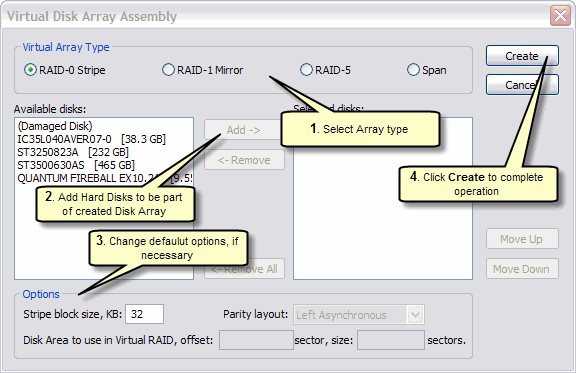

Technological innovation and advancement will further optimize the performance of the product, making it more widely used in downstream applications. Furthermore, the report provides detailed cost analysis, supply chain. The report focuses on the Redundant Array Of Independent Disks (Raid) market size, segment size (mainly covering product type, application, and geography), competitor landscape, recent status, and development trends. This report categorizes the market based on manufacturers, regions, type and application. This report focuses on the Redundant Array Of Independent Disks (Raid) in global market, especially in North America, Europe and Asia-Pacific, South America, Middle East and Africa. Redundant Array Of Independent Disks (Raid) Market size is projected to reach Multimillion USD by 2029, In comparison to 2022, at unexpected CAGR during 2022-2029.ĭespite the presence of intense competition, due to the global recovery trend is clear, investors are still optimistic about this area, and it will still be more new investments entering the field in the future. The high adoption of advanced technology and the presence of large players in this region are likely to create ample growth opportunities for the market.Įurope also play important roles in global market, with a magnificent growth in CAGR During the Forecast period 2022-2029. The market in North America is expected to grow considerably during the forecast period. Any changes from United States might affect the development trend of Redundant Array Of Independent Disks (Raid). North America, especially The United States, will still play an important role which cannot be ignored. The Redundant Array Of Independent Disks (Raid) market revenue was Million USD in 2016, grew to Million USD in 2020, and will reach Multi Million USD in 2026, with a Impressive CAGR during 2020-2026. In 2021, the market is growing at a steady rate and with the rising adoption of strategies by key players, the market is expected to rise over the projected horizon.

The Global Redundant Array Of Independent Disks (Raid) market is anticipated to rise at a considerable rate during the forecast period, between 20. After it’s done, we can say that the problem is finally resolved.Short Description About Redundant Array Of Independent Disks (Raid) Market: See above example, after sdf is successfully added to md1, you can use command “cat /proc/mdstat” to check the current re-built progress. Now we’ll add it to the raid and the raid will be re-built. Now we assume that the new disk is already in place and it’s sdf. Replace the fault disk and replace it with a new disk. The raid is still in degraded mode since the faulty disk is not be replaced with new disk.ģ. And it can be mounted successfully and the data is still there. This can be done by command “mdadm –assemble ”Ĭheck above example, we use four disks (sdb/sdc/sdd/sde) to reassemble the raid. Now we have enough information and we can try to re-assemble the raid and make it active first. sdb/sdc/sde/sdf are working properly now.Ģ. there are 5 disks in this raid and one is faulty. This command will one try to read meta data and will do no harm to disk.

If unfortunately you don't remember any information about the disks’ name, you can also try them one by one. In this example, we can remember that sdb is in this raid, so we can find the whole raid information from sdb. So you can find the raid information from either disk in the soft raid. For each disk in the soft raid, there is a complete meta data in it. First find that how many disks in this md.


 0 kommentar(er)
0 kommentar(er)
